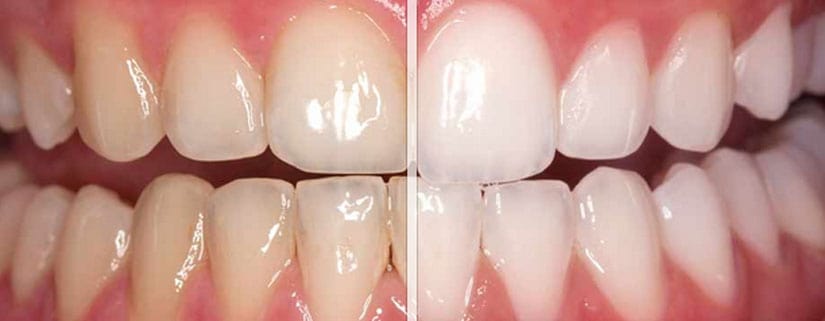Teeth staining is one of the most common concerns people have with their teeth. The good news is that teeth staining isn’t usually a cause for health concern. The bad news is that 73% of people look for a nice smile as a determining factor in creating first impressions and in potential relationships.
Here we are going to examine the types of tooth staining, the leading causes and the treatment options available to anyone wanting a brighter smile.
Types of Tooth Staining – Plaque
The build-up of plaque can cause teeth staining if you don’t brush and floss regularly. Plaque that is left unchecked will build tartar on your teeth which will cause discolouration. A regular brushing and oral hygiene routine can prevent this but if left unchecked you will need treatment at a dental surgery.
Treatments
Treatment options for plaque and tartar are different from other forms of teeth staining. You will need to visit a dental practice and have your teeth cleaned and buffed to remove the tartar. This involves a polishing and scraping of the teeth to remove the build-up of debris on your teeth and along your gum line.
If after a professional clean your teeth are still stained (yellow) then you may need to pursue teeth whitening options to regain your white teeth.
Types of Tooth Staining – Food and Drink
The most common forms of tooth staining are as a result of the build-up of residues from food and drinks. Dark drinks and richly coloured foodstuffs such as coffee, tea, wine, sports drinks, berries and tomato sauces can all cause teeth to become discoloured over time. As with anything the more you indulge the more at risk you are of staining your teeth. Nicotine is also a major culprit of tooth staining.
Treatments
Teeth whitening is the most common treatment for this type of discolouration. There are three major treatment types available;
Over the counter Whitening Products
There are a wide range of teeth whitening home solutions available from pharmacists and online. These products tend to be the cheapest options but they are not always effective and can sometimes be unduly harsh on your teeth. Whitening toothpastes may contain abrasives which can be harmful to your teeth in the long term. Home whitening systems that use a mould, syringe and gel won’t contain nearly enough hydrogen peroxide (which is the “magic” ingredient in dental whitening systems) and so their effectiveness will be limited.
Dental Practice Home Treatments
Many practices, including us, offer more advanced home treatment systems which take 2-3 weeks to complete. We can mould a whitening tray to your teeth to ensure more effective home bleaching. You can view our range of teeth whitening treatments here. This type of treatment is the most effective of all home treatments but is time consuming.
In Practice Treatments
The most effective forms of treatment and the fastest can all be done in surgery. They use a stronger bleaching solution and specialised light treatments to whiten your teeth quickly. These treatments typically take just 60-90 minutes. We offer these treatments at our practice but if you are not in our area, try WhatClinic to find a local service provider.
Types of Tooth Staining – Intrinsic
In rarer cases teeth discolouration can be caused by other factors. Common causes include trauma to teeth which damages the pulp or causes internal bleeding that leaves stains, the historical use of tetracycline antibiotics as a child or a rare medical condition called dentinogenesis imperfecta which causes different hued discolorations.
Treatments
Treatments for intrinsic teeth staining are much less straightforward. In most cases they simply are left but you can have crowns placed over the teeth or have the inside of a tooth bleached (usually when a root canal procedure is completed). These are expensive specialist treatments though and require careful consideration.

